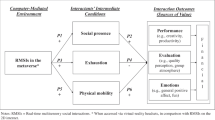Abstract
Human Computer Interaction (HCI) is a theory in which we are trying to find ways to enable humans to work with machines or computers and to help people understand the information presented. Data visualization and information visualization are formal ways to intervene in complex information and deliver it to viewers effectively. Infographics help to reduce digestion time for complex data, and have the advantage of making it possible to connect people effectively with all types of data, and that is why we should use infographics as a powerful visual information delivery medium. By using best practices in visualizing interactive data, we are able to separate out meaningful and interesting stories. Based on information provided by the powerful User Experience (UX) community, we can make the world easier to navigate and more fun. There are many ways to evaluate infographics and UX. And with the silimilarity of their evaluation criteria, it means good infographics can help maximize the UX evaluation score. This paper is extending observations on how people evaluate infographics and combine that evaluation with the consideration of UX benefits.



(Source: https://www.covidvisualizer.com/)

(Source: https://www.londoncitybreak.com/map)



Similar content being viewed by others
Data availability
The authors also declare that data availability and ethics approval is not applicable in this paper.
References
Wodehouse C (2017) How The Study of Human-Computer Interaction (HCI) Helps Guide Better UI Design? Available online: https://www.upwork.com/hiring/development/humancomputerinteractionuidesign/?utm_campaignSubmission&utm_sourceGrowthHackers.com&utm_mediumCommunity&utm_termhumancomputerinteraction. Accessed Apr 2020
Interaction design Foundation (2019) Human-Computer Interaction (HCI) Your constantly-updated definition of Human-Computer Interaction (HCI) and collection of topical content and literature., Available online: https://www.interaction-design.org/literature/topics/human-computer-interaction. Accessed Apr 2020
McLeod S (2009) Short Term Memory. Available online: https://www.simplypsychology.org/short-term-memory.html. Accessed Apr 2020
Wong E (2020) User Interface Design Guidelines: 10 Rules of Thumb. Available online: https://www.interaction-design.org/literature/article/user-interface-design-guidelines-10-rules-of-thumb. Accessed Apr 2020
Bhuller G (2014) 5 Key Elements of a Successful Infographic. Available online: https://www.envisionup.com/blog/5-key-elements-of-a-successful-infographic/. Accessed Apr 2020
Siricharoen WV, Phan CV (2017) Question matrix method according to divided dimensions of infographics evaluation. Pers Ubiquit Comput 21(2):219–233. https://doi.org/10.1007/s00779-016-0988-7. (Springer-Verlag London 2016)
Myers BAA (1998) Brief history of human computer interaction technology. ACM Interactions 5(2):44–54
Siricharoen WV (2013) Infographics: The New Communication Tools in Digital Age, Conference: The International Conference on E-Technologies and Business on the Web (EBW2013), Bangkok, Thailand. Available online: https://www.researchgate.net/publication/256504128_Infographics_The_New_Communication_Tools_in_Digital_Age. Accessed Apr 2020
(2019) Interation design Foundation, Information Visualization - Who Needs It? Available online: https://www.interaction-design.org/literature/article/information-visualization-who-needs-it. Accessed Apr 2020
Babich N (2017) Putting Personas to work in UX design: what they are and why they’re important. Available online: https://theblog.adobe.com/putting-personas-to-work-in-ux-design-what-they-are-and-why-theyre-important/. Accessed Apr 2020
Weber W, Wenzel A (2013) Interaktive Infografiken : Standortbestimmung und Definition. In: Weber W, Burmester M, Tille R (eds) Interaktive Infografiken, (pp 3–23). Springer. https://doi.org/10.1007/978-3-642-15453-9_1
Dodge A (n.d.) Why Interactive Infographics? Available online: https://www.copypress.com/blog/why-interactive-infographics/. Accessed Apr 2020
Langer J Zeiller M (2017) Evaluation of the User Experience of Interactive Infographics in Online Newspapers. Available online: https://people.fh-burgenland.at/bitstream/20.500.11790/961/1/langer_zeiller_usability_interactive_infographics_fmt2017_cr.pdf. Accessed Apr 2020
Interaction design Foundation (2019) Human-Computer Interaction (HCI). Available online: https://www.interaction-design.org/literature/topics/human-computer-interaction. Accessed Apr 2020
Karagianni K (2018) Optimizing the UX honeycombA small amendment to the classic diagram hopefully improves its UX. Available online: https://uxdesign.cc/optimizing-the-ux-honeycomb-1d10cfb38097. Accessed Apr 2020
Belk W (2014) How do we Evaluation User Experience (UX). Available online: https://medium.com/@wbelk/how-do-we-evaluate-user-experience-ux-2fd3dbeabe17. Accessed Apr 2020
Morville P (2016) User Experience Honeycomb. Available online: https://intertwingled.org/user-experience-honeycomb/. Accessed Apr 2020
Lu L (2018) How to Improve UX through Data Visualization. Available online: https://www.springboard.com/blog/how-to-improve-ux-through-data-visualization/. Accessed Apr 2020
Carroll JM (2019) Human-computer interaction: a brief introduction. In the encyclopedia of human-computer interaction, 2nd edn. InterAction Design Foundation
Interaction design Foundation (2019) User Experience (UX) Design. Available online: https://www.interaction-design.org/literature/topics/ux-design. Accessed Apr 2020
Martin L (2018) Designing effective infographics. Nielsen Norman Group. World leaders in research-based user experiences. Retrieved from: https://www.nngroup.com/articles/designing-effective-infographics/
Damyanov I, Tsankov N (2018) The role of infographics for the development of skills for cognitive modeling in education knowledge (conclusions, messages, etc.) Int J Emerg Technol Learning (iJET) 13(01). Available online: https://online-journals.org/index.php/i-jet/article/download/7541/4755. Accessed Apr 2020
Platt D (2016) The joy of UX: user experience and interactive design for developers (Usability). Pearson Education Heg USA
Author information
Authors and Affiliations
Corresponding author
Ethics declarations
Conflict of interest
The authors declare that they have no conflict of interest.
Additional information
Publisher's note
Springer Nature remains neutral with regard to jurisdictional claims in published maps and institutional affiliations.
Rights and permissions
Springer Nature or its licensor (e.g. a society or other partner) holds exclusive rights to this article under a publishing agreement with the author(s) or other rightsholder(s); author self-archiving of the accepted manuscript version of this article is solely governed by the terms of such publishing agreement and applicable law.
About this article
Cite this article
Siricharoen, W.V. Improving User Experience (UX) by Applying (Interactive) Infographic in the Human Computer Interaction Context. Mobile Netw Appl (2023). https://doi.org/10.1007/s11036-023-02179-7
Accepted:
Published:
DOI: https://doi.org/10.1007/s11036-023-02179-7





